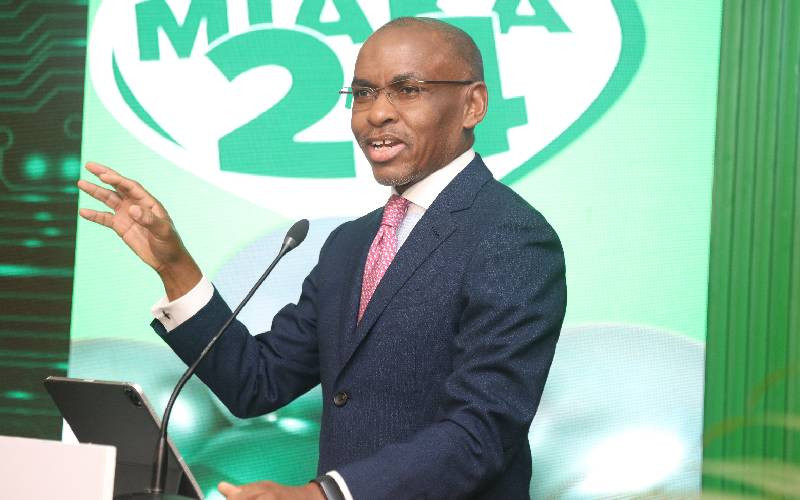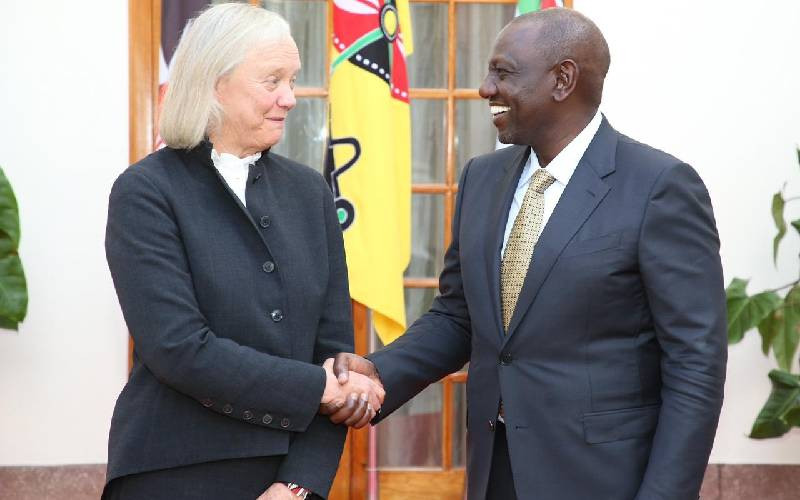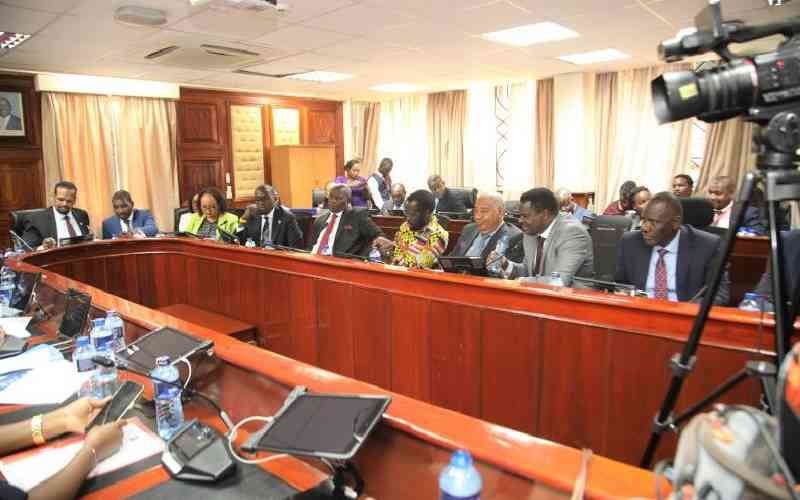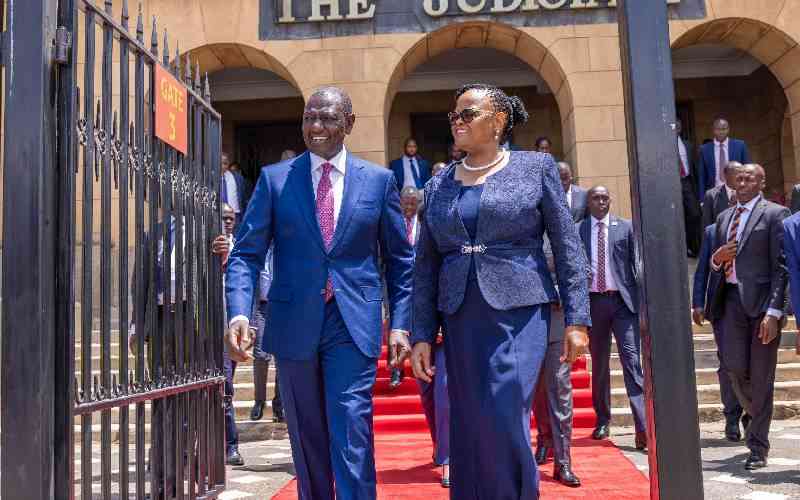</xml>
<style>
/* Style Definitions */
table.MsoNormalTable
{mso-style-name:"Table Normal";
mso-tstyle-rowband-size:0;
mso-tstyle-colband-size:0;
mso-style-noshow:yes;
mso-style-priority:99;
mso-style-qformat:yes;
mso-style-parent:"";
mso-padding-alt:0in 5.4pt 0in 5.4pt;
mso-para-margin-top:0in;
mso-para-margin-right:0in;
mso-para-margin-bottom:10.0pt;
mso-para-margin-left:0in;
line-height:115%;
mso-pagination:widow-orphan;
font-size:11.0pt;
font-family:"Calibri","sans-serif";
mso-ascii-font-family:Calibri;
mso-ascii-theme-font:minor-latin;
mso-fareast-font-family:"Times New Roman";
mso-fareast-theme-font:minor-fareast;
mso-hansi-font-family:Calibri;
mso-hansi-theme-font:minor-latin;}
</style>
Many times have I heard the story of someone who
flies from Mombasa to Nairobi, a distance of about 400Kms for only thirty
minutes then spends about three hours traveling from the airport to a suburb of
Nairobi where he would stay? It may appear fictional but this has in fact
befallen many hence the condensing of the whole awkward experience to the
aforesaid terse story. The traffic menace in the city of Nairobi
has been around for some time. Many solutions have been tried out. Some solutions
have been abandoned mid-way. Some have been left to run full but with no
success to highlight. Both national leaders and city leaders have made promises
but the situation is as stubborn as ever. Nairobians continue to sweat for many
hours while in transit to and from their places of work.
Lingering behind and worsening all this
confusion is the frequent accidents resulting from impatient motorists
competing just to get a head of each other. Public transport operators have to
guard against fuel losses that may come as a result of running engines for long
hours in clogged traffic.
There has been concern and investment in
solving the traffic problem that needs to be said. But with what success? Not
long ago the governor of Nairobi introduced what got baptized as Kidero drums,
named after him. These were drum shaped movable concrete pillars that were
placed at some roundabouts to reroute traffic to roads that were considered
less congested. They were also intended to eliminate the
bottleneck that happens at road intersections by making the existing
lanes a smooth way all through so that snarl ups do not occur as
motorists have to give way to each other at intersections. It all looked
beautiful. It looked like decorations along select roads leading to the city
centre. But discontent was building up. A wrong turn meant that one
had to drive along with his or her mistake for quite a distance. There arose
complaints that the method was contributing to more congestion. The naysayers
finally had their day.
The traffic havoc in Nairobi cannot be discussed
fully without bringing into the picture the late John Michuki who served as
transport minister under President Mwai Kibaki. He insisted that every traffic
rule be observed. Seatbelts were a must for both private and public vehicles.
Speed governors. Single colour on public transport cars. No loud music.
Uniforms for all crew operating public transport vehicles. No standing
passengers. Passengers to be picked and dropped at designated points only. You
disobeyed at your own peril. So public transport operators ganged up and called
a strike which was intended to make the minister soften his stand. They did not
succeed. The public sided with the minister. So Nairobians walked to work for
weeks on end and demanded that passengers are customers and should be treated
as such. For some time sanity was restored on all roads in major towns across
the country. Why didn’t this last? Well Mr. Michuki was removed from
the transport docket in a cabinet reshuffle. That was the end of the reforms.
It is ease to speculate that perhaps his removal was influenced by cartels
controlling public transport sector.
The expansion of roads has not been of any help.
Many roads around the city have been carpeted afresh and additional lanes
added. Even a construction of a superhighway with eight lanes has not altered
the situation a little bit. Worse still, these new developments in the
transport infrastructure have multiplied accidents on city roads because
motorists get carried away with the smooth ride on fine roads.
To understand the problem well, it is important
for one to visualize the map of Nairobi complete with its arteries. To the east
is a dual carriage way called Jogoo road. Though this section of town has a
railway line running through it, there is very little use for it. People who
live in this area are mainly delivered to or from town by road. Many hours are
said to be lost every day along Jogoo road.
To the south is Mombasa road that links
Nairobi to the second largest city, Mombasa. The fact that Mombasa is a port
city means that this route generates enormous traffic that contributes to the
congestion of roads all the way to the Malaba, a border point with our
neighbour Uganda. Mostly, the kind of vehicles along this path are huge tracks
that are used to haul cargo from Mombasa to other towns within Kenya and East African region. A few kilometers into the
city there is weighbridge for the cargo trucks, this creates a major bottleneck
because the weighing process involves a myriad of procedures and sometimes
allegations of bribes have been made; that those who do not cooperate may be
delayed intentionally by inspection officers. This if true, it probably
contributes to artificial traffic jams which affects other roads around the
city. It is important also to cite that this southern part of the city is where
major industries are. There are thousands of people that derive their
livelihoods from the industries. These people commute to work every day making
this area a hub of activities thus passenger vehicles as well as trucks that carry
goods and materials are many.
To the west of Nairobi we have Waiyaki way and
Gitanga roads. Both of these connect areas with high density population areas.
There are various markets and big businesses operating in these areas. There
has not been any major upgrade of roads in these areas. What we have is what
was planned in the 1990s. There is a huge increase in population since then a
fact that makes the infrastructure available appear overwhelmed.
Perhaps one of the most troublesome entrants
into the Nairobi transport sector and indeed in the entire country’s system is
the motorbike. The two wheelers mainly being imported from the Asian countries
have taken the country by a storm. They are mainly operated by youthful Kenyans
who for lack of jobs in the formal sectors see this opportunity as the only
link to survival. The government has shown little regard for enforcing
compliance with traffic laws on this category of road users. Consequently, a
lot of road accidents have been occasioned by motorbike operators who are so
popular among city residents because they are very convenient for they can drop
them at their doorsteps. They are also capable of beating traffic with amazing
easy since they can squeeze well into small openings in a traffic clogged way.
Yet again recently, there has been a new entrant
into the equation. A couple of huge buses capable of carrying about a hundred
and fifty passengers at ago were spotted around the city. It remains to be seen
how this will solve the mess in our roads. My bet is that the colour of the sea
will not change perceptibly. The long buses may just be adding to thousands of
vehicles on our roads and hence more competition which tends to drive some
public transport drivers out of mind since they have steep targets set for
them. Meeting the targets set is what keeps them on the job. A tough world
indeed.
Amazingly, Nairobi is far too beautiful with
light traffic. I remember last year when His Holiness Pope Francis landed in
Nairobi. Our good old city was transformed into a clear and well-coordinated
metropolis. There were very few vehicles within the city center. Passenger buses dropped off their customers at the edges of the city and all had to walk
to their final destinations. Before that was the visit by President
of the United States of America. In a period of about three days there was calm
and absolute sanity in the roads around the city. This was achieved because
there was proper supervision of traffic in all city roads and further there
were very few vehicles that were allowed to enter into the city center. There
is really beauty in walking into the city and feel it throb under your feet,
without the noise from running engines.
Solutions such as smart traffic lights have been
tried but nothing much has come of the project. Citizens have tried to use
social media to alert each other on what roads to avoid all in vain. Meaningful
improvement will remain difficult to achieve with many more cars being imported
in to the country every day. It is for sure that even expanding roads won’t
help much. The residents of Nairobi need to sacrifice to walk more. Let them
alight outside the city center then exercise their feet to their destinations.
Stay informed. Subscribe to our newsletter
 The Standard Group Plc is a
multi-media organization with investments in media platforms spanning newspaper
print operations, television, radio broadcasting, digital and online services. The
Standard Group is recognized as a leading multi-media house in Kenya with a key
influence in matters of national and international interest.
The Standard Group Plc is a
multi-media organization with investments in media platforms spanning newspaper
print operations, television, radio broadcasting, digital and online services. The
Standard Group is recognized as a leading multi-media house in Kenya with a key
influence in matters of national and international interest.
 The Standard Group Plc is a
multi-media organization with investments in media platforms spanning newspaper
print operations, television, radio broadcasting, digital and online services. The
Standard Group is recognized as a leading multi-media house in Kenya with a key
influence in matters of national and international interest.
The Standard Group Plc is a
multi-media organization with investments in media platforms spanning newspaper
print operations, television, radio broadcasting, digital and online services. The
Standard Group is recognized as a leading multi-media house in Kenya with a key
influence in matters of national and international interest.







